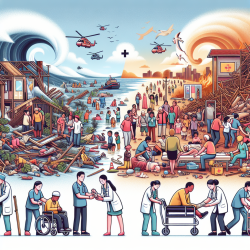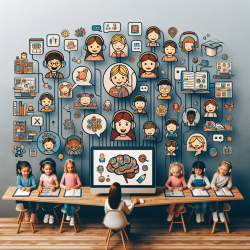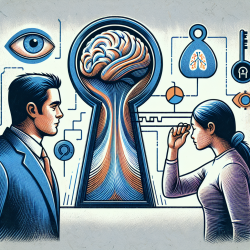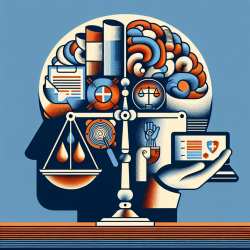Understanding the Role of Rehabilitation in Disaster Relief
In the aftermath of natural disasters, the focus is often on immediate life-saving measures. However, as highlighted in the research article "Disability and health-related rehabilitation in international disaster relief," the role of health-related rehabilitation is crucial yet often overlooked. This blog post aims to provide practitioners with insights into how they can enhance their skills and improve outcomes by integrating rehabilitation into disaster relief efforts.
Key Findings from the Research
The study reveals that the incidence of injuries and disabilities resulting from natural disasters has significantly increased over the past 40 years. Major impairments such as amputations, traumatic brain injuries, and spinal cord injuries require immediate rehabilitation interventions to prevent long-term disability. Unfortunately, the traditional health system response often neglects this crucial aspect.
Moreover, individuals with pre-existing disabilities are at a higher risk of mortality during disasters. The lack of rehabilitation services exacerbates the burden on already strained health systems, highlighting the need for a strategic integration of rehabilitation into disaster response plans.
Implementing Research Outcomes
For practitioners, the research underscores the importance of incorporating rehabilitation strategies from the onset of disaster response. Here are some actionable steps:
- Training and Preparedness: Ensure that disaster response teams include trained rehabilitation professionals. Regular training sessions can prepare responders to address the unique needs of disaster-induced disabilities.
- Multi-disciplinary Approach: Rehabilitation should be delivered by a team comprising physical therapists, occupational therapists, and rehabilitation nurses, alongside general health practitioners.
- Community-Based Rehabilitation (CBR): Post-discharge follow-up is crucial. Establishing CBR resources can help sustain functional gains and prevent secondary complications.
- Data Collection and Recordkeeping: Implement systematic data collection and medical recordkeeping practices to track rehabilitation outcomes and improve future responses.
Encouraging Further Research
While the current research provides valuable insights, there is a significant gap in scientific evidence regarding the effectiveness of rehabilitation interventions post-disaster. Practitioners are encouraged to engage in further research to develop evidence-based strategies that can be integrated into disaster relief efforts globally.
Exploring new approaches to assess and measure disability following natural disasters is crucial. Developing standardized indicators and assessment tools will enhance the ability to evaluate the impact of rehabilitation on disaster-induced disabilities.
Conclusion
Rehabilitation is a vital component of disaster relief that can significantly reduce morbidity and improve outcomes for affected individuals. By implementing the findings of this research, practitioners can play a pivotal role in strengthening health systems and enhancing the resilience of communities facing natural disasters.
To read the original research paper, please follow this link: Disability and health-related rehabilitation in international disaster relief.










